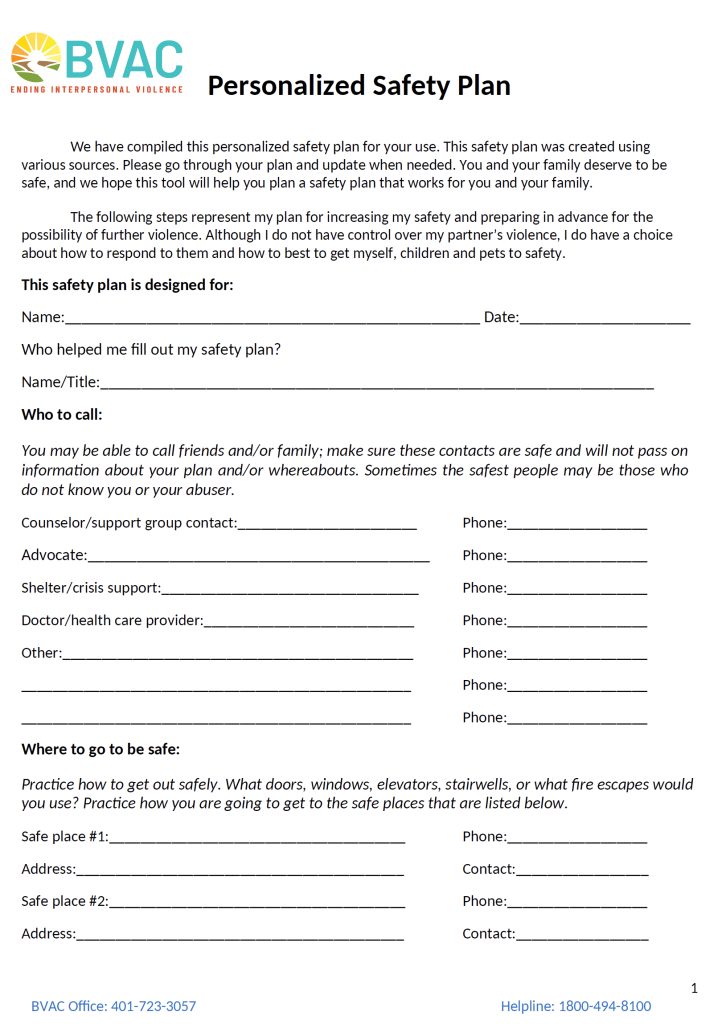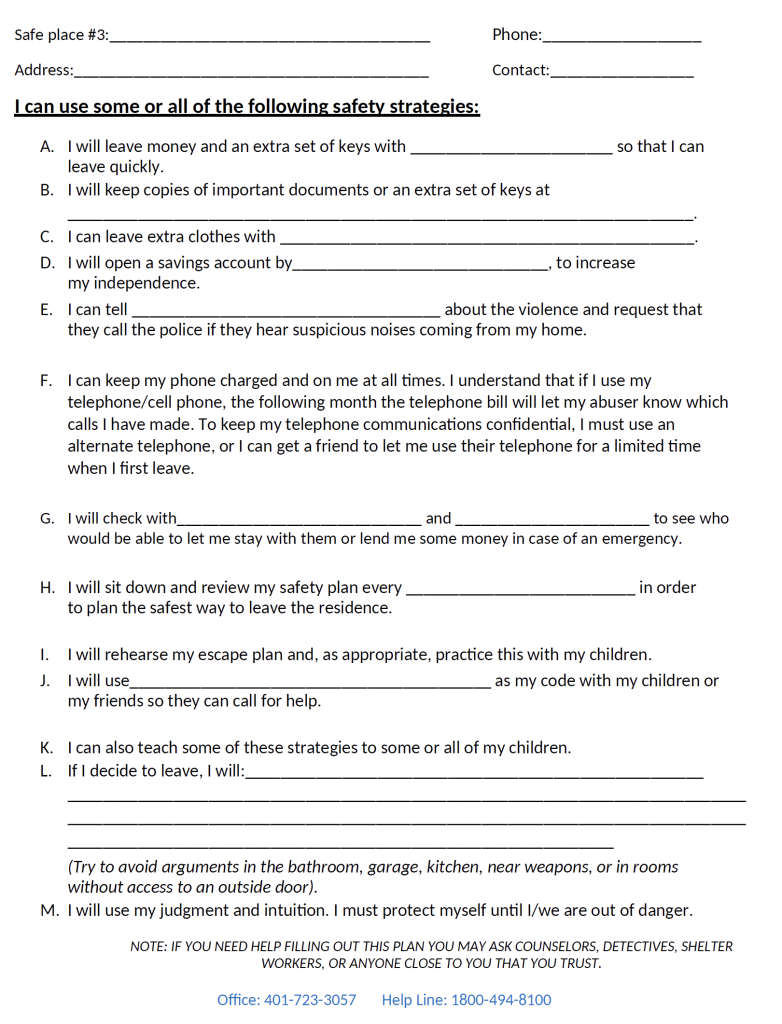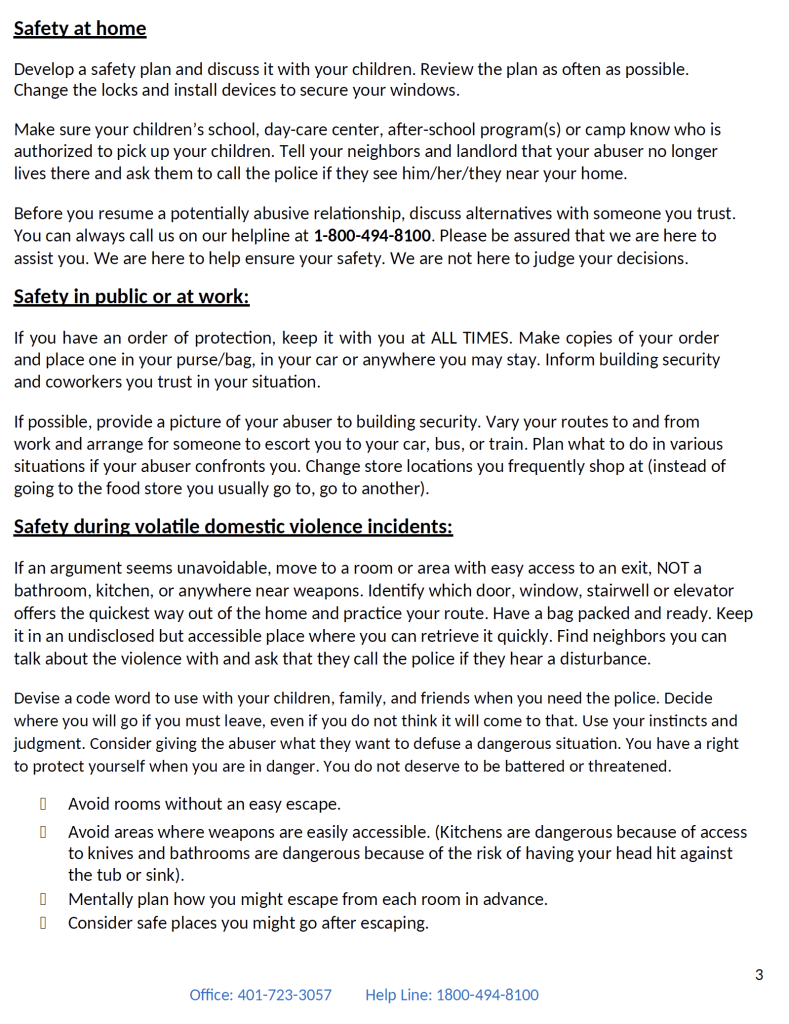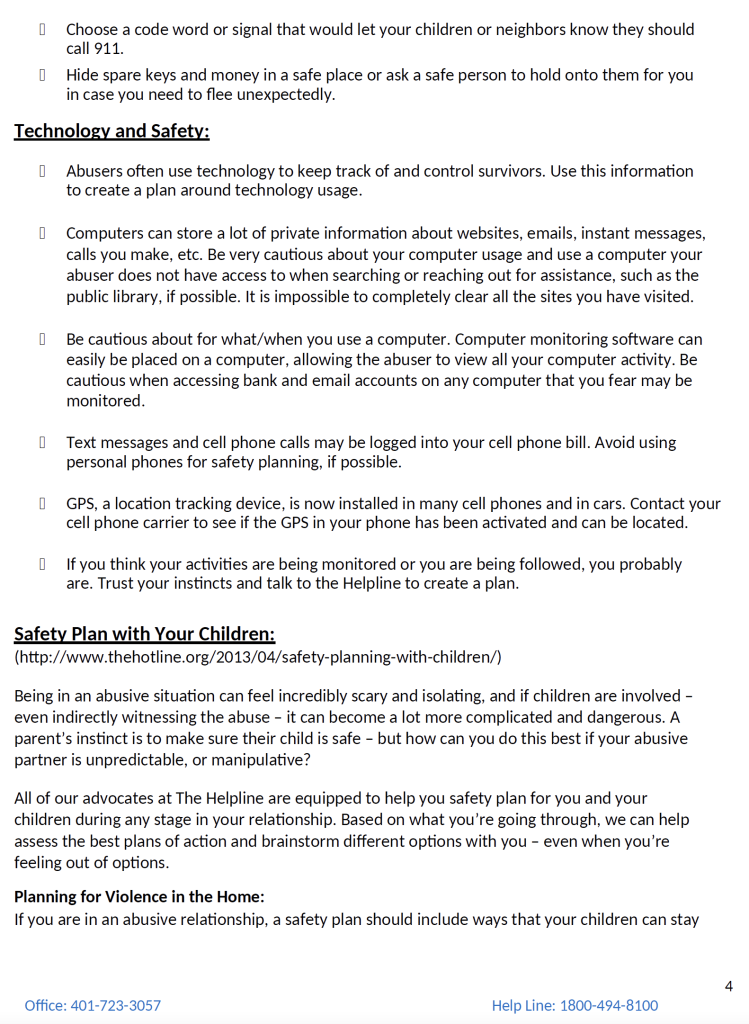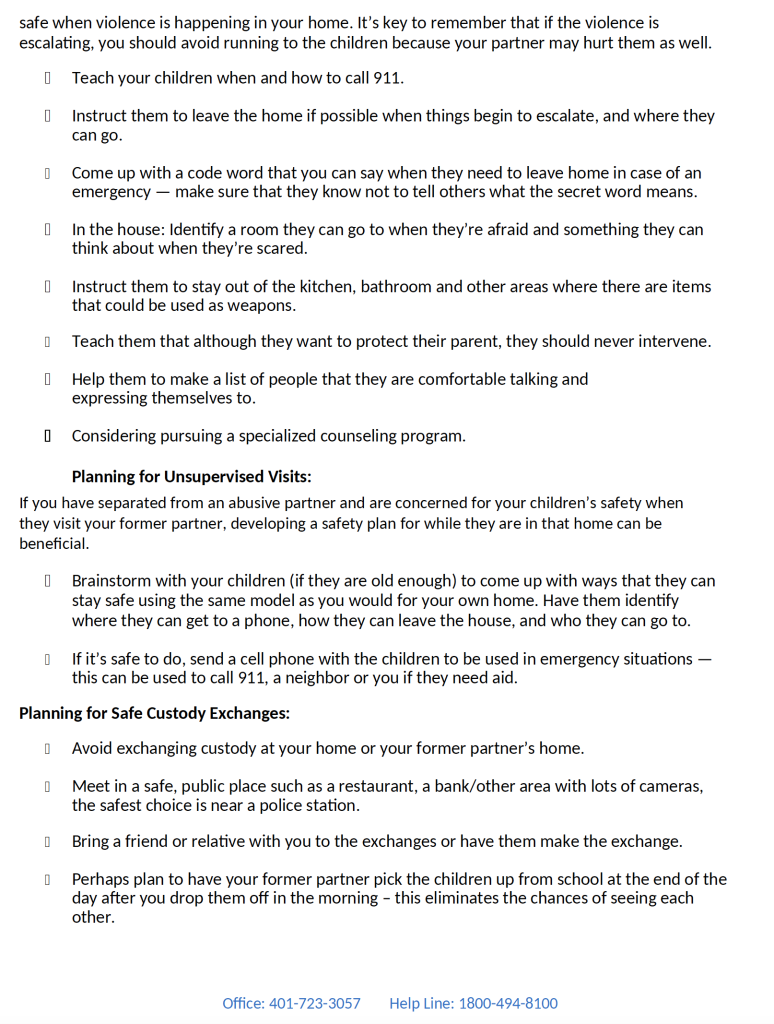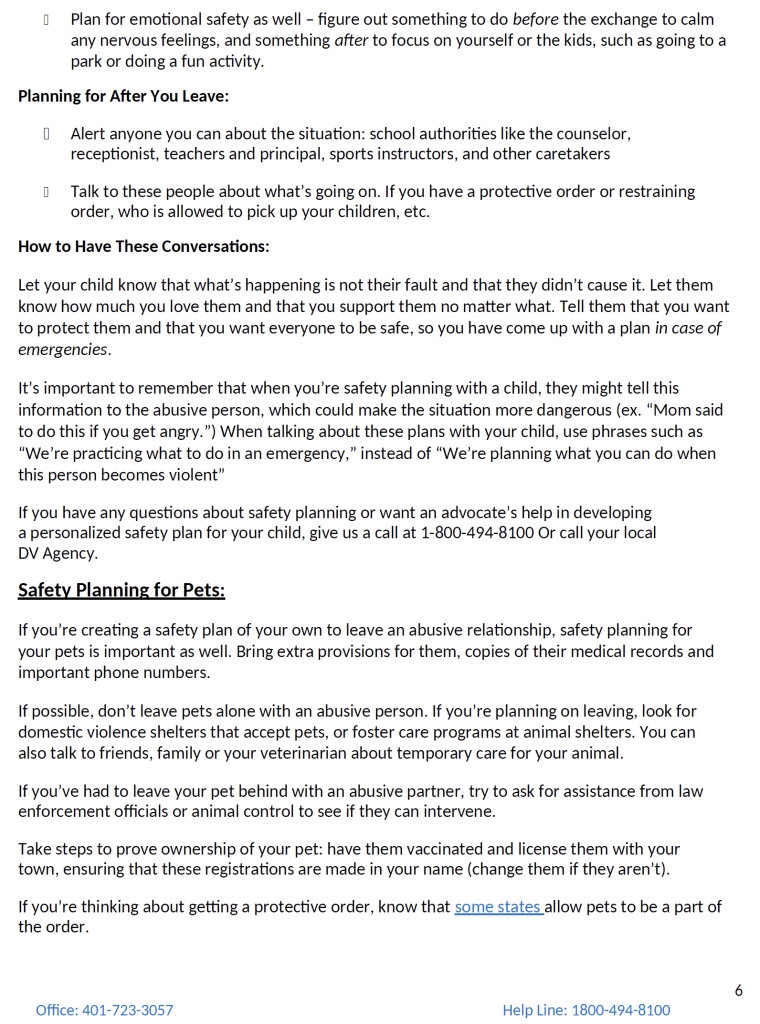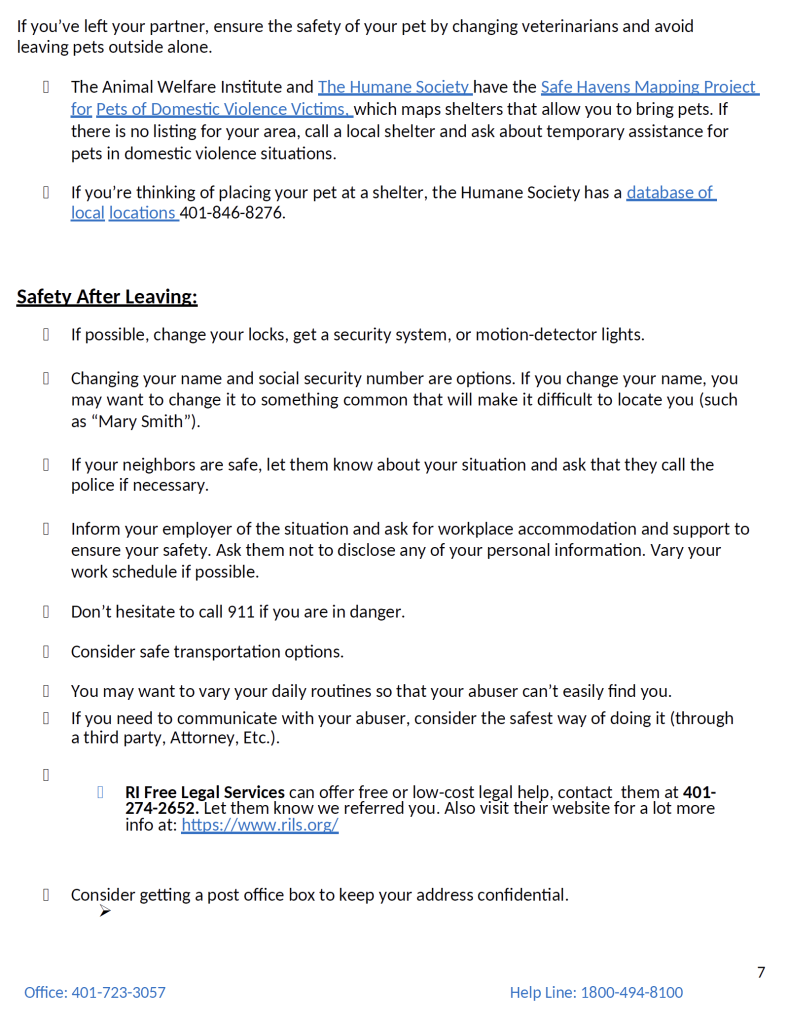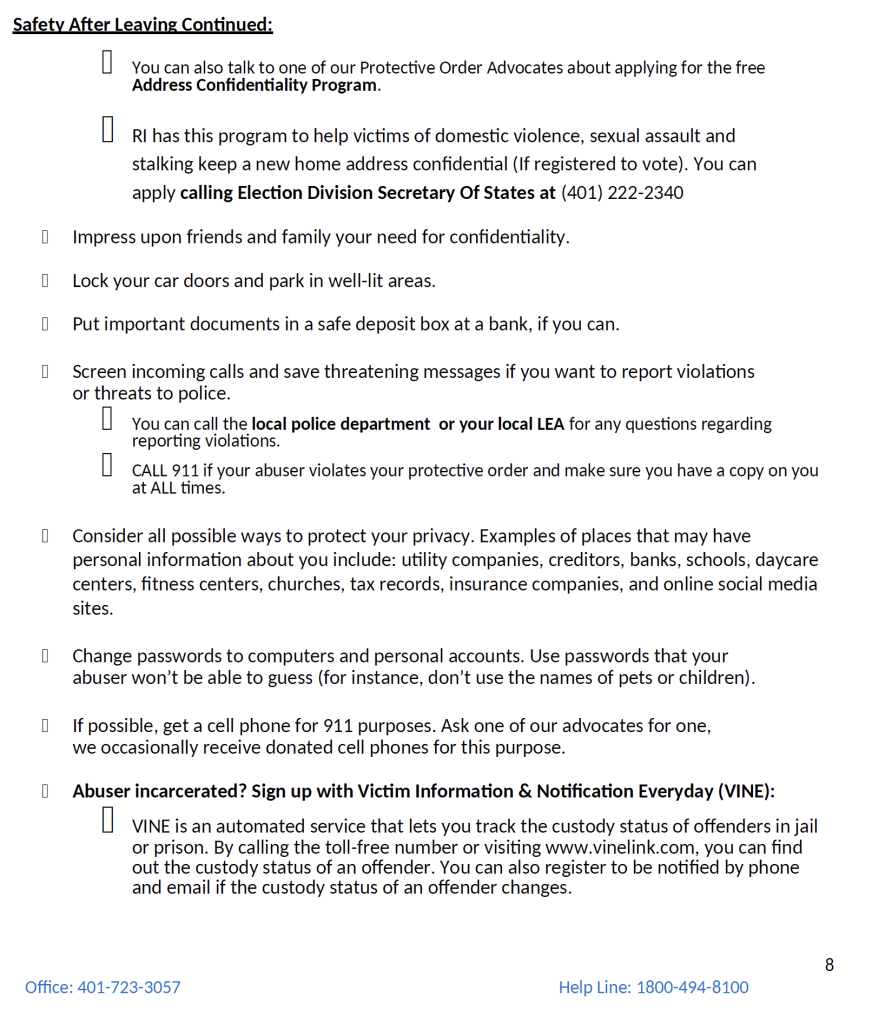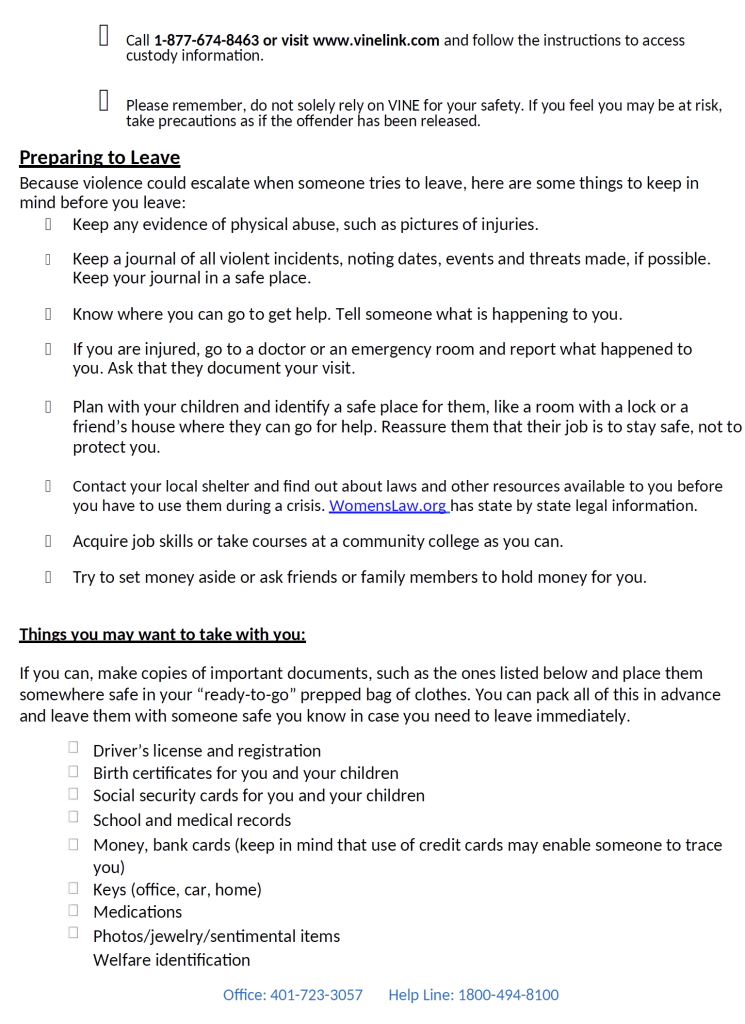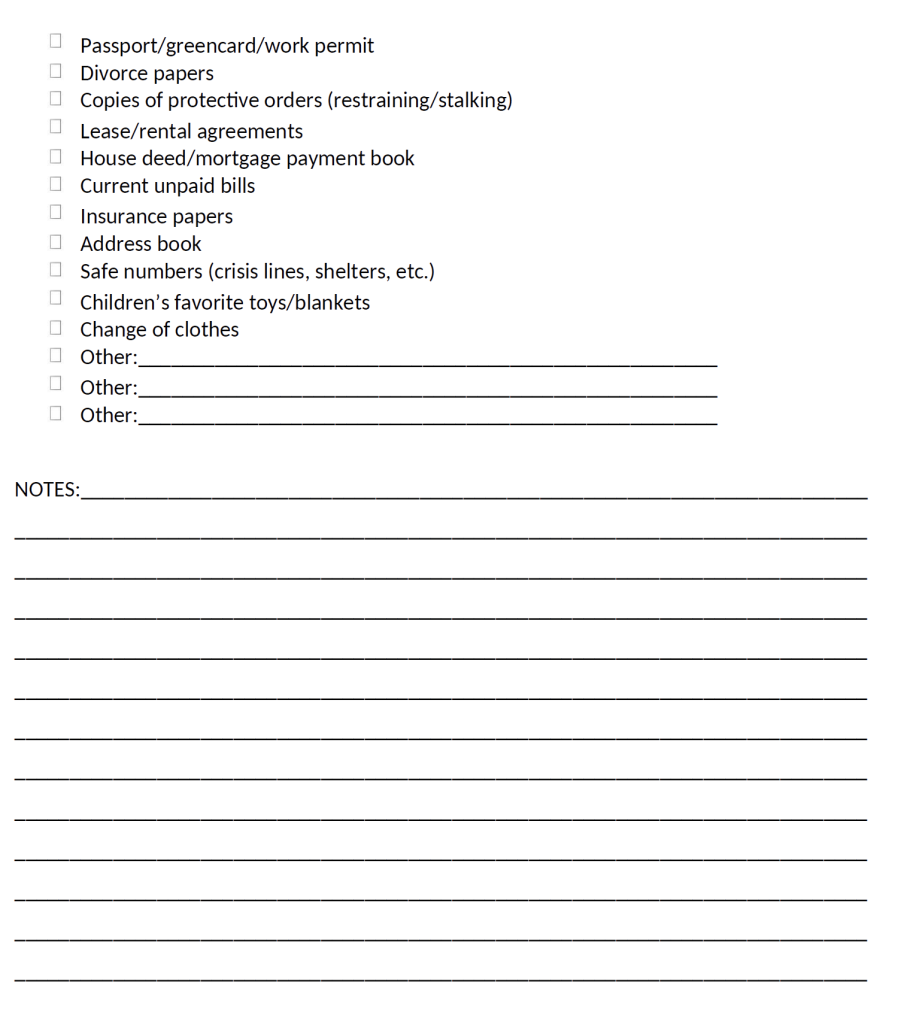Safety Plan
Crisis & Emergency Contacts
BVAC RESOURCES IN RI
BVAC RI (401) 723-3057
Email us at Info@bvadvocacycenter.org
RI Helpline: 1-800-494-8100
Drop-in center: 265 Oxford St.
Providence, RI 02905 (401) 785-2320
Providence, RI 02905 (401) 785-2320
Mon.-Sat: 10am-6pm
NATIONAL RESOURCES
National hotline for domestic violence: 800-799-7233
National hotline for sex trafficking: 888-373-7888
National hotline for sexual assault: 1-800-656-4673
Teen dating abuse helpline: 1-866-331-9474
Suicide & Crisis Lifeline – Dial 988 for free,
24/7 emotional support.
Day One Children’s Advocacy Center
(child victims of sexual abuse) 401-421-4100

